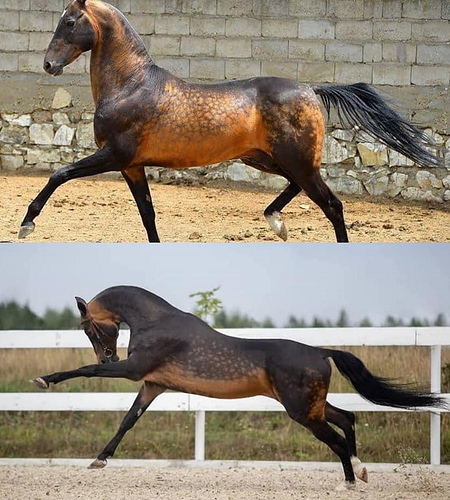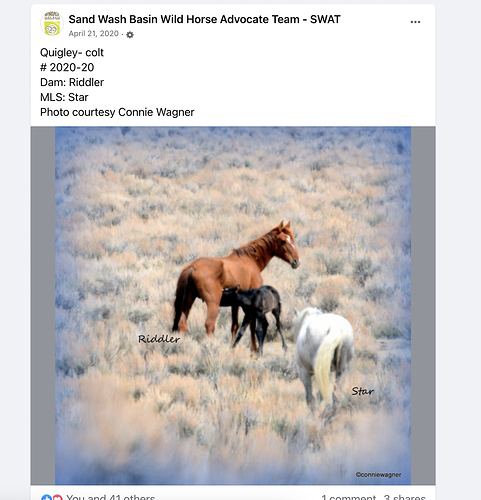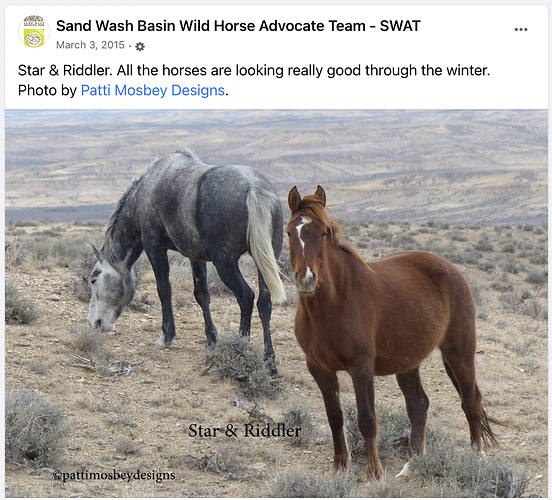That is likely nd1. This often results when combined with black, with tawny coloured hair inside the ear, and they often fade more than horses with with nd2.
Fun breed testing story:
Friend acquired a project horse of unknown breeding. Honey-sized, pinto, stocky, downhill.
She sent off a sample for breed testing.
Results came back Hanoverian, Holsteiner, and Oldenburg.
Right there I knew results were bogus because there is absolutely no way to genetically distinguish between open warmblood registries like that. But my friend was so excited to be the owner of a pinto warmblood!
A few months later she put her up for sale. And low and behold, the horse’s old owner was looking for her and wanted to buy her back! Tons of pictures and proof that it was the same horse. Including: her APHA papers.  Not one drop of European warmblood blood in that pedigree.
Not one drop of European warmblood blood in that pedigree.
aaaAAAkkkkK!!! ok, now i’m lost. nd1/nd2 is so confusing.
soooo… if i get the mane hairs from both sire and dam and send them to UC Davis, and get that combination panel (https://vgl.ucdavis.edu/panel/full-coat-color-pattern-panel)
will I be able to tell if there is a possibility of the foal being a palomino/cremello/buckskin/perlino?
i suppose there is no test to tell how much curly is in the curly mare is there? And that would be a breed test not a coat color test?
And JB…i vote for #3 as being the black, and #1 being smoky black. Foal is black too…
Beautiful horse! I so want another palomino!
Has she gotten progressively darker over the years or stayed pretty much the same shade, besides seasonal changes? Some palominos are just a darker shade than others.
well crap. That’s too bad. I would really like to know more about both of them.
I have owned him for six years. I may see a little darkening, but it is very minor if at all.
Sorry! Colour genetics can be a lot to get your head around. I’ll see if I can explain without making the confusion worse. When it comes to where Dun is located, there is Dun (D), non-dun2 (nd2) and non-dun1 (nd1). Dun is a dilution gene. The horses with dun have a diluted coat, grulla (or black dun), bay dun and red dun. They normally also have primitive markings, including a dorsal stripe that runs down through the tail, ear barring, and striping on the legs and down on the withers, much like a donkey. nd2 is no dilution, but some primitive markings, often the most noticeable being the dorsal stripe. nd1 is no dilution and no primitive markings.
Most black horses with tawny coloured ear hairs test to have nd1 and seem more prone to fading even when supplemented with zinc and copper.
Testing will give you a definite idea of the possibilities of what the parents can contribute to their offspring.
Sorry! I must have been thinking of my palomino mare when I called him a her. Been a long week!
Likely not sooty then, just a lovely dark shade. 
This picture shows the progression of sooty on an buckskin Akhal Teke. They do tend to do anything colour wise to an extreme though! These pictures show the progress of sooty from the top down.
akhal tekke’s …truly ‘a horse of a different color’!
I have one. Well, 50% one (sire). He is palomino.
Wow, that looks like a horse from a fairy tale!
Awesome color!
Glad my boy is staying palomino though!
Do you know anything more about their parents?
If she’s palomino and he’s black with a chestnut dam, your foal could be chestnut, black, palomino, smoky black, and possibly bay or buckskin if mom carries agouti.
If she’s palomino and he’s smoky black with a chestnut dam, your foal could be chestnut, black, palomino, smoky black, cremello, or smoky cream. Possibly bay, buckskin, or perlino if mom carries agouti.
That can possibly be confirmed or narrowed down more if you have any additional information about the parents of the sire and dam. But basically you have lots of color possibilities.
D is Dun. All horses originated as bay dun, that is the default species color. Everything else is literaly a mutation. Plain bay - mutation. Black - mutation, and so on.
The allele that Dun is on also mutated to nd1 and nd2
nd2 is “I ain’t got nuttin’ to do with Dun, period” so that Bay Dun turned into plain bay.
nd1 is a halfway measure. It may dilute the coat a LITTLE, doesn’t have to, but if it does, not nearly to the degree that D does. But it interferes with pigment distribution in the hair shaft, which is part of what lends the hairs to fading. Double down on that - nd1/nd1 - and you get a horse more likely to be “he looks bay but something’s off” and likely fades fairly significantly"
Bay is used there as example - nd1 (and D) can exist on all colors.
nd1 also often puts on some Dun factors like a dorsal stripe (so that plain bay with a strong stripe down his spine is likely nd1), maybe some face masking, ear tips, leg barring, etc. Not usually strong, not a requirement, but that “sooty bay” with the markings on his face and shoulders, likely nd1
exactly BUT, you don’t need that full panel. Neither are gray, the mare doesn’t have pearl or she’d look like a cremello, and single pearl doesn’t show up on horses do it doesn’t matter if the sire has pearl or not, neither are tobiano, HIGHLY doubtful either, let alone both, are Frame and it’s too late now anyway even if they both are, neither are Silver or Champagne. Neither are LP (leopard), which means it doesn’t matter if either carry PATN1 because without LP, PATN can’t express.
You want Red factor, Cream, and Agouti. That will tell you what colors are possible
You CAN do Sabino, Splash White, and Dominant White, but knowing those are there doesn’t tell you how much white the foal might have.
I’m actually not entire positive whether there’s a public Curly test or not. I know it was being worked on, but don’t know its status.
There are 4 horses 
other way around 
nd2 is nothing to do with Dun
nd1 may have some primitive markings (or not), may have a slight coat dilution (so that it looks just…off), and increases fading
Thanks for catching that! Will teach me to post while playing fetch with my Border Collie!
hahaha!
His sire is gray. i THINK he was all black before fading away. I’ve a photo of him when Quigley was foaled and another a few years prior…where he looks KINDA? black
in the photo id “MLS” means: Most Likely Sire
But he’s not, so no gray test is needed. But unless there are foal to maybe 1-2yo pictures of his gray sire, you don’t have any insight into his color. Even in his darker younger photo there’s no way to know his base color, the gray process is too far in
That said, that photo shows a chestnut dam, which means whether he’s black or bay or smoky black, he’s Ee, and that means there’s a chance of palomino (which requires ee as a base)
Ok, I’ll provide the answers to the 4 pictures:
#1 and #2 are black.
#3 and #4 are smoky black
https://colorgenetics.info/equine/gallery
This proves you cannot visually distinquish black from smoky black
Ah. It very well could have been Selle Francais or Trakahner and I’m misremembering (or was mistold, since it wasn’t my report).
But…
Is it really helpful when your horse comes back something like Akhal Teke, Lipizzaner, Selle Francais… but he is actually a registered
Anglo arab? If you know the parentage you can work backwards and justify the results. But on a horse of unknown breeding, that narrows down almost nothing.
If you are on a timeline, I used Animal Genetics for color and genetic disorder testing on two horses and was happy with the results. It was slightly cheaper and faster turnaround time than the college labs (I received results about 4-6 days after mailing samples). I personally wouldn’t bother with breed testing for reasons above. I have heard good things about both Texas A&M and UC Davis, and for me it was mostly a timeframe issue (and I was able to catch a sale at AM).
For the Curly genes on the mare, Etalon offers curly gene testing (listed as $59 on their site). I’ve heard mixed reviews about Etalon on color and disorder testing (have never personally used them so no personal experiences), but they are one of the only labs that offers designation of the specific curly genes (KRT25 or SP6, there are others but these are the only ones currently able to be tested to my layperson knowledge - and it may not matter to you which specific gene [or genes] she has).
One of the equine colour groups I’m a member of on Facebook, tracks Etalon errors. They’ve made errors on genetic and colour testing, including HYPP, Frame (LWO) and tobiano. I’d go elsewhere.



